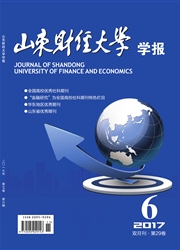

 中文摘要:
中文摘要:
为了揭示中国农业面源污染的时空分布特征、考察地区差距的来源及动态演进规律,文章在测算2001-2015年中国31个省份农业面源污染排放量的基础上,对农业面源污染的空间分布和空间趋势进行可视化描述,采用DAGUM基尼系数和KERNEL密度估计方法实证考察了中国农业面源污染的地区差异及分布动态演进规律。研究发现:中国农业面源污染呈现较为明显的空间非均衡特征,污染较严重的地区主要集中在山东、河南、四川等农业大省;在地区差异层面,东部和西部地区之间的差异最大,超变密度是农业面源污染地区差异的主要来源;在分布动态演进规律上,中国农业面源污染呈逐步加重趋势并呈现出明显的空间极化现象。这些结论对中国农业的可持续发展具有重要价值。
 英文摘要:
英文摘要:
In order to reveal the temporal and spatial distribution characteristics of China agricultural non-point pollution (NPS) and investigate the origin and dynamic evolution law of regional disparity, this paper, baSed on the measurement of 31 provinces" agricultural NPS emission from 2001 to 2015, visually describes the spatial distribution and spatial tendency of agricultural NPS, and empirically investigates the regional disparity and dynamic evolution law of China agricultural NPS by adotping Dagum Gini coefficient and Kernel density estimation method. The results show that China agricultural NPS presents a characteristic of obvious spatial non-equilibrium with the most polluted areas mainly distributed in Shandong, Henan, Sichuan and other major agricultural provinces; in terms of regional disparity, the disparity between eastern and western regions is the largest while the super-variable density is the main source of regional agricultural NPS disparity; and in terms of dynamic distributional evolution law, China agri- cultural NPS presents a trend of gradual increase and an obvious spatial polarization. All these conclusions are of great significance to China sustainable agriculture development.
 同期刊论文项目
同期刊论文项目
 同项目期刊论文
同项目期刊论文
 期刊信息
期刊信息
